TEL AVIV, Israel—A 28-page document that lays out the clearest plan for postwar Gaza to date has circulated at the highest level of Israel’s security apparatus. In the proposal obtained by The Dispatch, a team of researchers looked to the past to chart out a better future for the war-torn Strip.
The draft proposal, which has not yet been made public, seeks to tackle perhaps the most difficult question facing Israeli decision-makers today: how to create the conditions for Gaza to exist peacefully alongside the state of Israel. To do so, Israeli researchers Netta Barak-Corren of Hebrew University, Danny Orbach of Hebrew University, Netanel Flamer of Bar-Ilan University, and Harel Chorev-Halewa of Tel Aviv University analyzed historical examples of military occupation and attempted societal transformation to learn from the successes and failures.
Though the academics’ findings were first distributed to government officials in February, momentum for such a plan has built in recent weeks—particularly as Israeli forces fight to prevent Hamas from resurfacing in areas of Gaza that were previously cleared. While it’s unclear how the document is being received, it has reached the top echelon of the Israeli government and military.
Calls for a postwar plan for Gaza, which has seen widespread destruction and tens of thousands of deaths from the nearly nine-month war between Israel and Hamas, have increased recently as negotiations for a ceasefire and return of Israeli hostages stalled. During Israeli Defense Minister Yoav Gallant’s trip to Washington last week, Secretary of State Antony Blinken urged Israel to come up with a reconstruction and security blueprint for Gaza and its 2.3 million residents.
“If we don’t bring something else to Gaza, at the end of the day we will get Hamas,” Rear Adm. Daniel Hagari, spokesman for the Israel Defense Forces, warned last month.
And that “day after” could come sooner than previously thought. As Israeli journalist Nadav Eyal noted in a recent report, Hamas has now lost 95 percent of its rocket arsenal, most of its smuggling routes, and all of its munitions-production capacity. An estimated 35 percent of the terrorist group’s fighters have been killed, while an even larger portion have been injured and taken off the battlefield. The time to plan for Gaza after Hamas is now, argues the team of Israeli researchers that includes a pair of Middle East experts, a military historian, and a legal scholar.
The paper, “From a Murderous Ideology to a Moderate Society: Transforming and Rebuilding Gaza After Hamas,” outlines a series of pragmatic steps that must be taken to reform a society shaped by its terrorist sovereigns for more than 15 years.
“Israel’s ability to achieve its goals depends not only on the military and political campaign going on today, but also on its ability to facilitate rebuilding and transforming a nation that was led by a murderous ideology,” the document asserts, “such that it will grow stable institutions and an Arab culture that does not educate for jihad and that reconciles with the existence of Israel as a state.”
Though the report doesn’t wade into military strategy, its starting condition is clear and controversial: the total defeat of Hamas. Rehabilitation under fire isn’t possible, with the authors pointing to the historical examples of the U.S. campaigns in Iraq and Afghanistan.
In Iraq, U.S. forces’ early failure to secure the borders allowed for the flow of jihadists into the country, with those fighters eventually backed by locals disillusioned by the lengthy American occupation. The Obama administration’s 2011 military withdrawal amid that instability worsened the situation, fueling sectarian conflicts and eventually creating the conditions for the Islamic State to win supporters and conquer territory.
A similar vacuum in Gaza could prove disastrous for Israel, as it did after Jerusalem pulled its forces and settlements from the Strip following a wave of terror attacks in 2005. Hamas launched a bloody civil war to oust the Palestinian Authority just two years later and has used the territory as a launch pad for attacks on Israel ever since.
“It should be expected that even in the best case, any governmental structure in Gaza will require guidance, security intervention from time to time, and even assistance from Israel and other partner countries,” the report notes. “The idea that it is possible to abandon Gaza and ‘throw the keys to the sea’ proved to be a disaster already in the years after the disengagement and is also a dangerous illusion today.”
The U.S.’s phased withdrawal from Afghanistan, likewise, expedited the collapse of the American-supported government in Kabul. By broadcasting to the Taliban the date by which U.S. forces planned to depart, Washington empowered the jihadist fighters and undermined morale among its own allies. Thus the report’s authors recommend measuring progress in Gaza’s reform process by achievements, rather than setting a strict timeline for occupation forces’ eventual withdrawal.
“If you want the reform efforts to be successful, you need to focus on achieving qualitative measures and not adhering to a strict timeline,” Barak-Corren, one of the paper’s authors and a legal scholar whose work focuses on conflict resolution, told The Dispatch. Otherwise, “your allies know that you are going to abandon them at that time point and they will not have anyone to rely on, and your enemies know that they just need to survive and prepare themselves for your departure.”
Unsuccessful U.S. efforts to transform Iraq and Afghanistan into liberal democracies should also serve as cautionary tales for Israel, the researchers argue. The key to change is some continuity, the report notes, arguing that Gaza should maintain aspects of its cultural character. But it also concedes the difficulty of achieving deradicalization when religion—and in particular, Hamas’ brand of Islamic fundamentalism—plays a central role in Gazan society. “The close connection between extremism and religion in Gaza makes it difficult to create an alternative narrative to the Hamas narrative.”
But history offers examples of successful religious reforms, even from recent years. In Saudi Arabia, Crown Prince Mohammed Bin Salman has led a top-down effort to lessen the role of Wahhabism—an ultraconservative form of Sunni Islam—in the everyday lives of his people. The shedding of this ideology has included a relaxation of restrictions on women, crackdowns on imams for incitement, and revisions to the curricula taught in schools. Riyadh recently overhauled the country’s textbooks, removing denunciations of Zionism as a “racist” European movement and references to Israel as an enemy state.
Given Saudi Arabia and other Gulf Arab states’ steps toward tolerance, the draft proposal advocates for closely involving them in the rehabilitation of Gaza. In particular, it envisions heavy Arab state participation in reworking its education system and religious order in a way that promotes peace but maintains the society’s cultural character.
In the short-term, a regional coalition could also help provide for Gaza’s immediate humanitarian needs, thereby depriving Hamas of the opportunity to reconstitute under the auspices of a civil administration. In the medium- to long-term, the continued involvement of moderate Arab countries is vital for reorienting Gaza away from the Iran-Qatar axis.
Strengthening the defeated regime’s ties to the American orbit was a key component in the two reconstruction success stories analyzed by the postwar report: West Germany and Japan after World War II.
The transformation of postwar Germany, which underwent a dramatic deradicalization, hinged on the complete defeat and unconditional surrender of the Nazi regime. For many Germans, the humiliation of World War II undermined the very basis of the dictatorial and fanatical leadership that brought it about. Thus, when the Allies occupied and began the process of rebuilding and reforming Germany, they encountered very little resistance from the local population. While the researchers note a surge in Palestinian support for Hamas post-October 7, they argue that public opinion can change quickly. The terror group’s defeat, in particular, could bring about the collapse of its support base.
The German example also demonstrates the effectiveness of a phased occupation, particularly if the end goal of restored sovereignty is always in sight. Allied forces directly occupied Western Germany for five years after the war, after which they moved to an indirect occupation until 1955. From that point onward, Germany resumed its independence while maintaining close security and political ties with the U.S. and its allies thanks to NATO. Allowing the country into the regional fold ensured that it maintained its progress toward becoming a prosperous, Western-oriented liberal democracy.
In Gaza, too, the researchers argue there must be an interim period in which the Strip is run by outside forces—preferably, an international and regional coalition but possibly Israel—followed by a gradual return to Palestinian management and sovereignty. That end goal may be something the Israeli government is beginning to consider. In an address before a joint session of Congress on July 24, Prime Minister Benjamin Netanyahu is reportedly expected to announce his support for a pathway to Palestinian statehood in exchange for a deal that would see normalized ties with Saudi Arabia and the release of Israeli hostages from Hamas captivity.
Creating a positive horizon for independence and international acceptance is crucial for gaining buy-in from local populations, according to the researchers’ proposal. But so is some degree of continuity.
In postwar Japan, in many ways the closest parallel to Gaza today, allowing the emperor to continue his largely ceremonial role lended legitimacy to the U.S. reform efforts. The symbolic figure blessed the process of demilitarization, including through the adoption of a new constitution that enshrined the democratic and pacifist character of the country. The Japanese army and navy were blamed for imperial Japan’s descent into militarism, just as the authors of the postwar document argue Hamas should be held responsible for the war amid Gaza’s eventual reconstruction process.
“Japan during World War II, under the auspices of an out-of-control army and navy, developed a suicidal, violent military culture of blind sacrifice that in important ways is actually very similar to the jihadi, death cult culture of Hamas,” Barak-Corren said. “There are also many similarities in the methods: indifference to human suffering, prevalent wartime rape, brutal assassinations both of political opponents and of the enemy. The cruelty of the Japanese army was a very well-known phenomenon during the war.”
“That makes the Japanese transformation all the more fascinating, because the Japan we know today is pacifist,” she added.
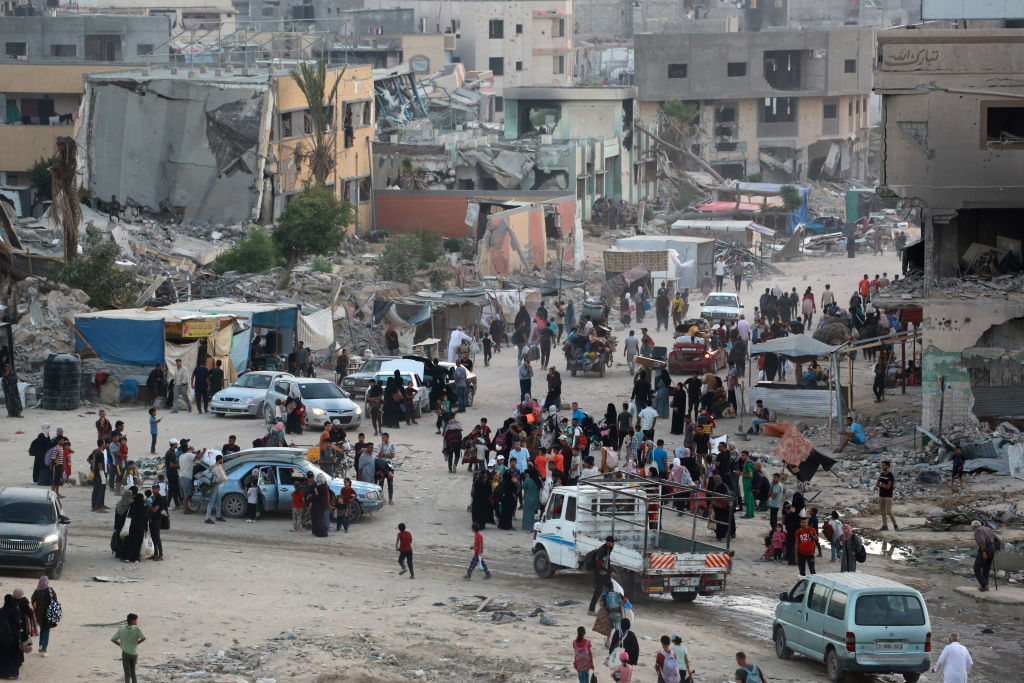

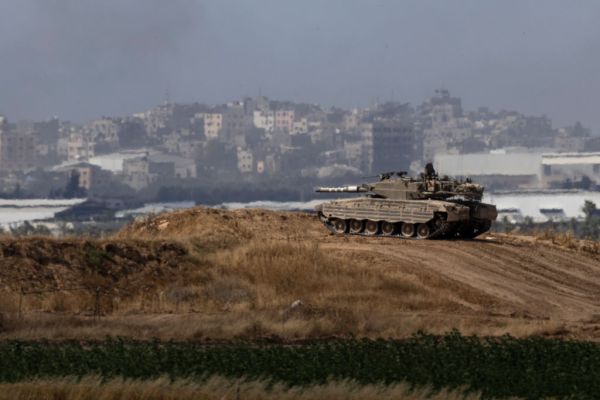
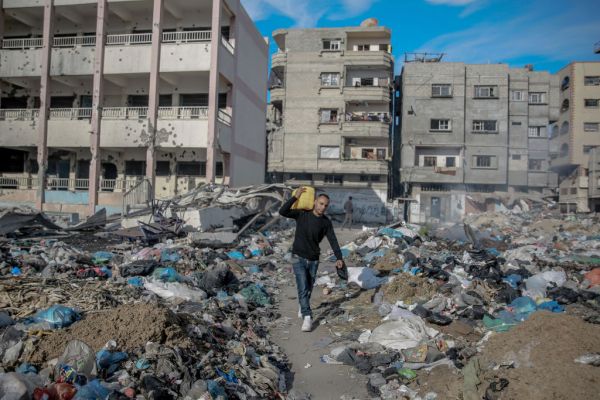
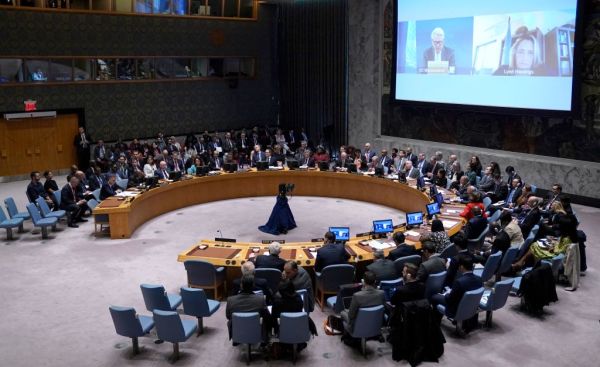

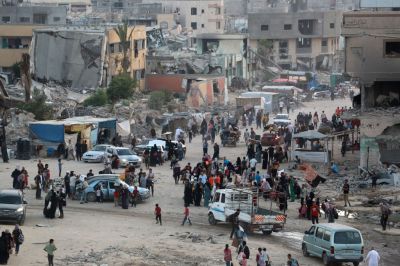
Please note that we at The Dispatch hold ourselves, our work, and our commenters to a higher standard than other places on the internet. We welcome comments that foster genuine debate or discussion—including comments critical of us or our work—but responses that include ad hominem attacks on fellow Dispatch members or are intended to stoke fear and anger may be moderated.
With your membership, you only have the ability to comment on The Morning Dispatch articles. Consider upgrading to join the conversation everywhere.